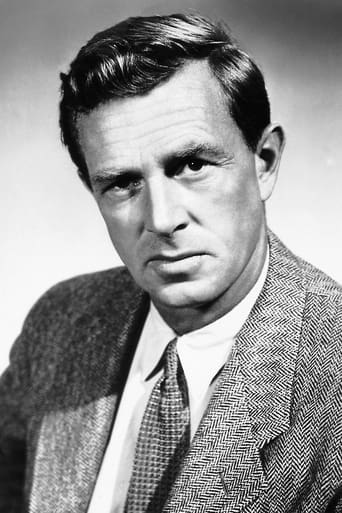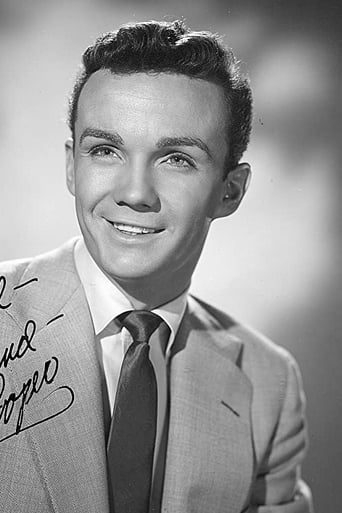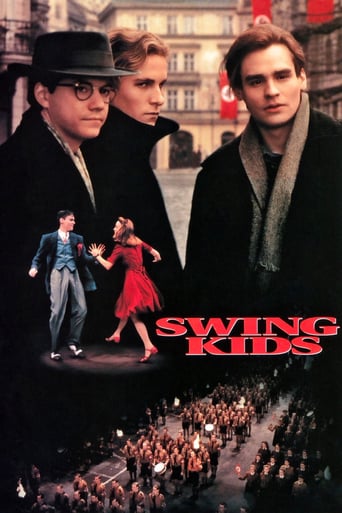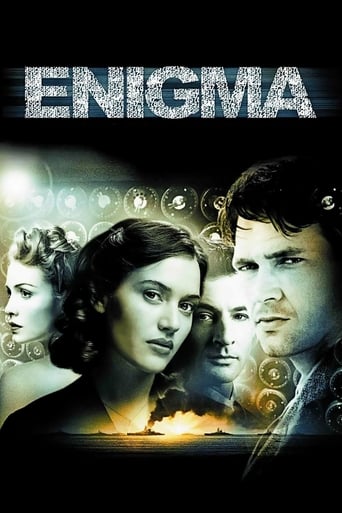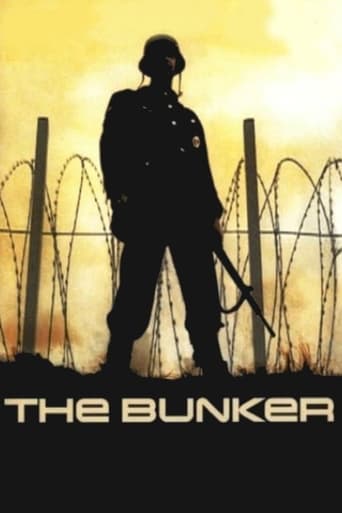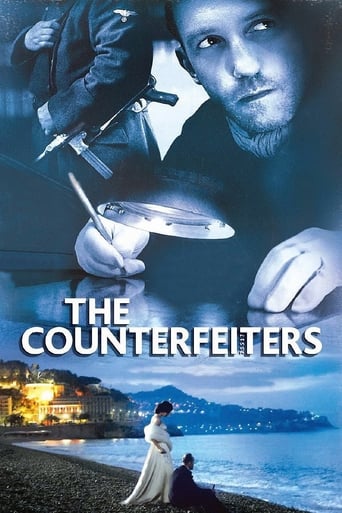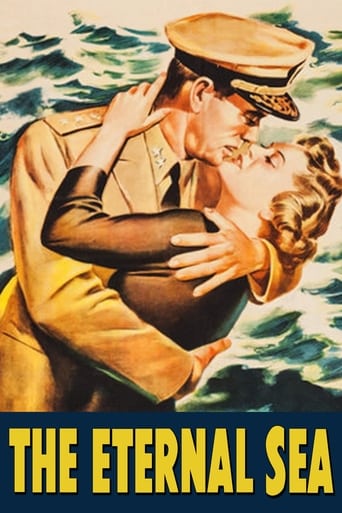
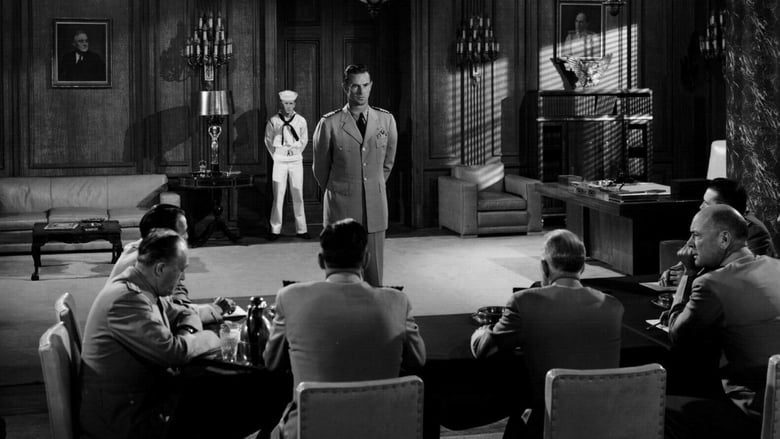
The Eternal Sea (1955)
Biography of Admiral John Hoskins' efforts to retain active command despite WW2 injury.
Watch Trailer
Cast
Similar titles
Reviews
Pretty good movie overall. First half was nothing special but it got better as it went along.
I wanted to like it more than I actually did... But much of the humor totally escaped me and I walked out only mildly impressed.
This is a must-see and one of the best documentaries - and films - of this year.
The thing I enjoyed most about the film is the fact that it doesn't shy away from being a super-sized-cliche;
This is a biopic about Admiral John Hoskins. The movie looks more like a war (or navy recruitment) propaganda than a drama. It's amazing Sterling Hayden can go through 1h 43 min with the same facial expression and wooden acting style. He portrayed the guy as a total jerk (maybe it was true...) I agreed more with his critics in the movie than himself. Especially his antics during the construction of new Princeton were terrible. If I were one of the engineers working on the dockyard I'd kill him. As for the directing, the narrative is pretty flat and devoid of tension. The war scenes are unimpressive and cursory. The only quasi-drama happens when he fights against those who want his retirement and is short-lived. The rest is a documentary style slow-paced storytelling. Perhaps, the only redeeming quality of the movie is its sporadic attempts for making a statement for the disabled.
This film could be called almost a purist biopic, but it is different from all other biopics in its carefully documentary character in a very restrained style of refinery making it rather classic in character and form. It simply tells the true story of the naval officer who by sheer stolid stubbornness rose to become one of the greatest and most important admirals of the US navy in the Korea war to finally step down voluntarily when he simply felt it the right thing to do as he saw other needs where he could make himself even more useful. The conclusion of the film is therefore the ultimate apotheos of a very constructive life.But the via crucis to that end is long and difficult, we see the casualties, the downing of carriers, the pioneer planes ending up in flames, the war is there in all its inhumanity and hell, but since it was there it had to be fought and won, and that's what keeps the admiral going even as he lies decrepit and hospitalized with threats of permanent retirement. This is an American parallel to Douglas Bader.It's a unique film in its singular discipline of sticking to the subject and aiming at the point throughout, and therefore it strikes home with a vengeance.
It's nice to be in a consensus (well, almost!) for once. This is a dull war yarn about a captain who carries on with an artificial limb. It could have been exciting. It could have been moving. It could have been provocative. It could have been heart-warming. But despite the fact that it's a true story, it's not put across with drama, feeling and heart-warming power. Instead, it's just plain dreary. Even an opportunity for a great action sequence is nixed by having that scene take place almost entirely off-camera! Even the acting manages to be dull with Sterling Hayden ruggedly carrying on, while Alexis Smith plays the ever-loving wife with a strictly stiff upper-lip. She's not a real-life person but an animated statue, programmed to give all the approved, flag-waving reactions. Similarly boxed-in is Dean Jagger who is required to play the twinkling-eyed, superior officer friend of the family. And as for the direction: Usually John H. Auer is both interesting and creative. A man to watch – but not in this movie!
It's late in World War II, the Battle of Leyte Gulf. The aircraft carrier USS Princeton is bombed. There is a secondary explosion that sinks the ship and costs Captain John M. Hoskins, Sterling Hayden, a leg. He's pretty bitter about it too because he was just about to take command of the Princeton. The Navy plans to retire him but Hoskins refuses. This troubles the Navy. It also troubles Hoskins' wife, Alexis Smith. She wants her sailor husband home. All Navy wives want their sailor husbands to stop thirsting for sea water, at least in John Wayne movies. However, she passes on some information to him that will save his career, sacrificing her own satisfaction for his sake. Not only that, but the Navy gives him command of the NEW USS Princeton and, in the years after World War II ends, it becomes his job to prepare the aircraft carrier to launch and receive Grumman jets.Hayden had a curious career. He was always half hearted about it. He was more interested in doing his own sailing than in acting, and most of his early films, like this one, were done by the numbers. He never made the Mount Rushmore of manliness like John Wayne or Robert Mitchum. His politics didn't help, even though he "named names", as the saying went. As an OSS operative during the war, he'd been inserted into Yugoslavia to help Tito organize the partisans against Hitler's troops, and in doing so picked up some ideas considered anathema at the time. In 1964 he managed to give a startling performance as a crazed Air Force general in "Dr. Strangelove," turning the maniac into an object of pathos.His wife, Alexis Smith, had fluorescent red hair and aquamarine eyes to die for. She looked regal. Canadian actresses look regal. They could all play queens -- except for Ruby Keeler who would have to be the naif from Nova Scotia whose royal heritage has only recently been discovered.You don't get to see the color of Smith's eyes in this movie because it's in black and white. It came from Republic Studios run by the notoriously cheap bonehead Herbert J. Yates, a man of little taste, whose idea of "art" had a dollar sign in front of it. Yates also shoehorned in his main squeeze, Vera Hruba Ralston, as a leading figure whenever possible. And he cheated John Ford out of some money connected with "The Quiet Man," and Ford never forgave John Wayne for getting him mixed up with Yates.However, mean though Yates may have been, this movie isn't shabby. It's not limited to one or two indoor sets. Nothing like that. It's a respectable production, though an inexpensive one. None of the combat scenes are staged. They're all taken from newsreel footage, which was still relatively new to audiences at the time. That is, we see Hayden and some other officer staring at something off screen and then the film cuts to a shot of an airplane landing or taking off. The Navy's Grumman Panthers were cool-looking aircraft as far as that goes. They no longer looked like rudimentary jets. They looked ready to fly at speed, though in fact they were no match for Soviet jets. I watched them practicing touch and go landings from a carrier in Monterey Bay, a thrilling experience.The writing and direction are strictly instrumental. There's not a jot of originality in either. Nor does a viewer learn any of the technical details about converting aircraft carriers to jets. And unless you know the differences between commanding a carrier and commanding a carrier division or a fleet, you may miss some of the steps upward taken by "the peg leg admiral." Hoskins was a real historical figure and quite a guy according to this movie -- flawless in fact. He was awarded the Navy Cross for his action in Korea. He also was awarded the following medals: Purple Heart, Legion of Merit, China Service Medal, Order of Military Merit, from the Philippine Government, the Philippine Liberation Medal, Atlantic Fleet Clasp, Asiatic Pacific Campaign Medal, plus others. He was still alive when the movie was made.
